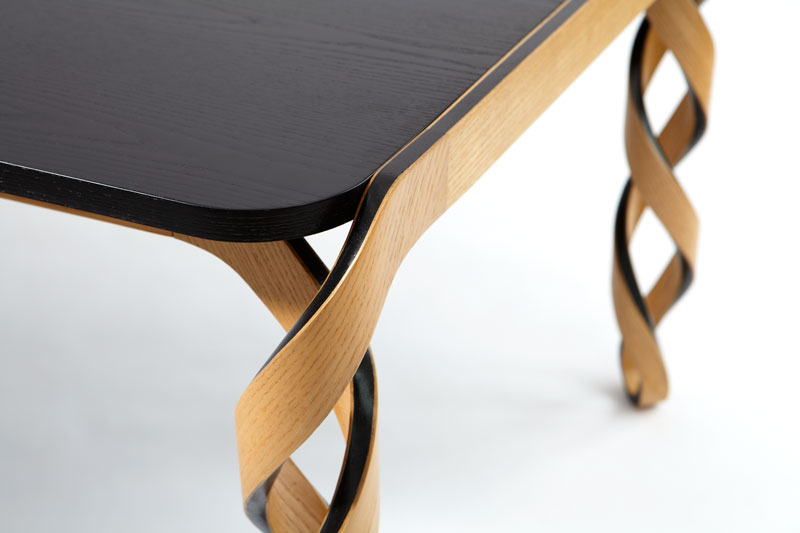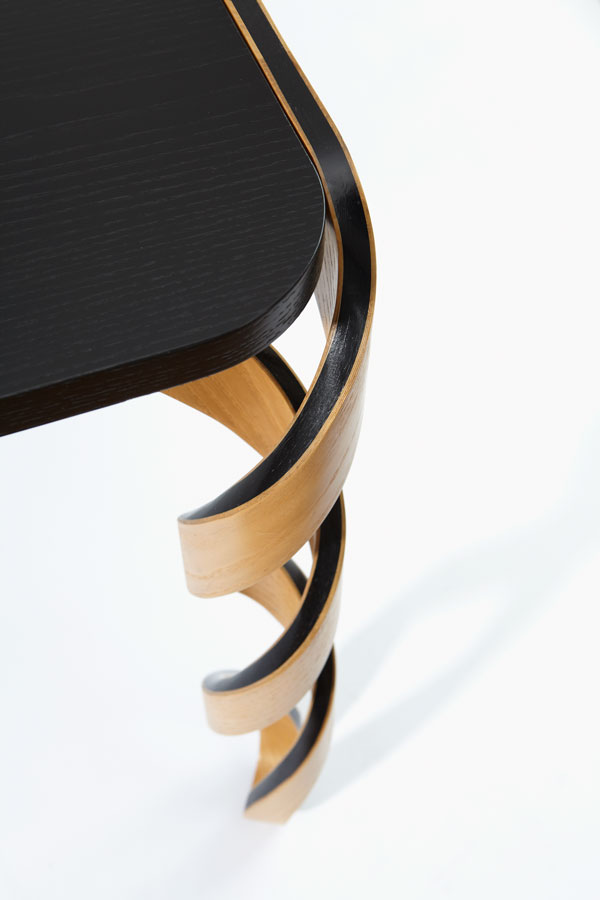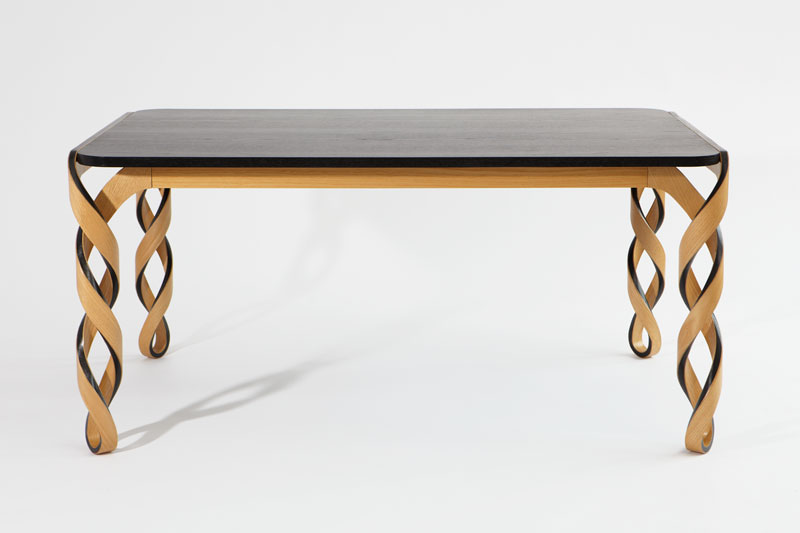- Share
- Like
- Tweet
- Digg
- Tumblr
- VKontakte
- Love This
- Odnoklassniki
- Meneame
- Blogger
- Amazon
- Yahoo Mail
- Gmail
- AOL
- Newsvine
- HackerNews
- Evernote
- MySpace
- Mail.ru
- Viadeo
- Line
- Comments
- SMS
- Viber
- Telegram
- Subscribe
- Skype
- Facebook Messenger
- Kakao
- LiveJournal
- Yammer
- Edgar
- Fintel
- Instapaper
- Copy Link
New York based designer Paul Loebach created a table inspired by the DNA structure. The Watson Table, with its sophisticated and elegant design, was firs introduced at the 2011 Milan Design Week, as part of the “Some Recent Experiments” collection. The table got its name as a tribute to James Watson, the American scientist famous for discovering the helical structure of DNA.

Image Courtesy of Paul Loebach
I felt like a scientist developing this table, working through numerous controlled material experiments to achieve the desired result. The closer I came to the solution, the simpler the experiments became, and the final result is a wood-composite structure laminated over a simple 6-part plywood mold.

Image Courtesy of Paul Loebach
The whimsical form was also inspired by English furniture design in the late 1600’s, with its distinctive open wood turnings, sometimes referred to as ‘barley twists’.
I was interested in translating these twisting shapes into bold structural elements, for the purpose of experimenting with new combinations of materials and construction processes.

Image Courtesy of Paul Loebach
The construction process was as innovative as the design itself. To make production and material use as efficiently as possible, Loebach used an ‘additive’ lamination process, as opposed to a machining-based approach.

Image Courtesy of Paul Loebach
I began to experiment with composite materials to give structural support to this naturally ‘springy’ form; the result is a combination of wood and carbon fiber, with a painted wood top. This composite ‘sandwich’ utilizes the inherent rigidity of carbon as a structural core, creating a symbiotic composition providing a maximum of strength using a minimum of material.

Image Courtesy of Paul Loebach
About Paul Loebach
Paul Loebach is a New York City-based furniture and product designer. His work incorporates digital modeling and manufacturing technology, combined with a deep analysis of furniture history and traditional crafting techniques. Paul works as a manufacturing consultant for major furniture companies and is an adjunct professor at the Rhode Island School of Design. His projects have been exhibited internationally and published broadly in books, weblogs, and periodicals such as: Wallpaper, Surface, The New York Times, and Architectural Record among many others.
*All images and information courtesy of Paul Loebach.
